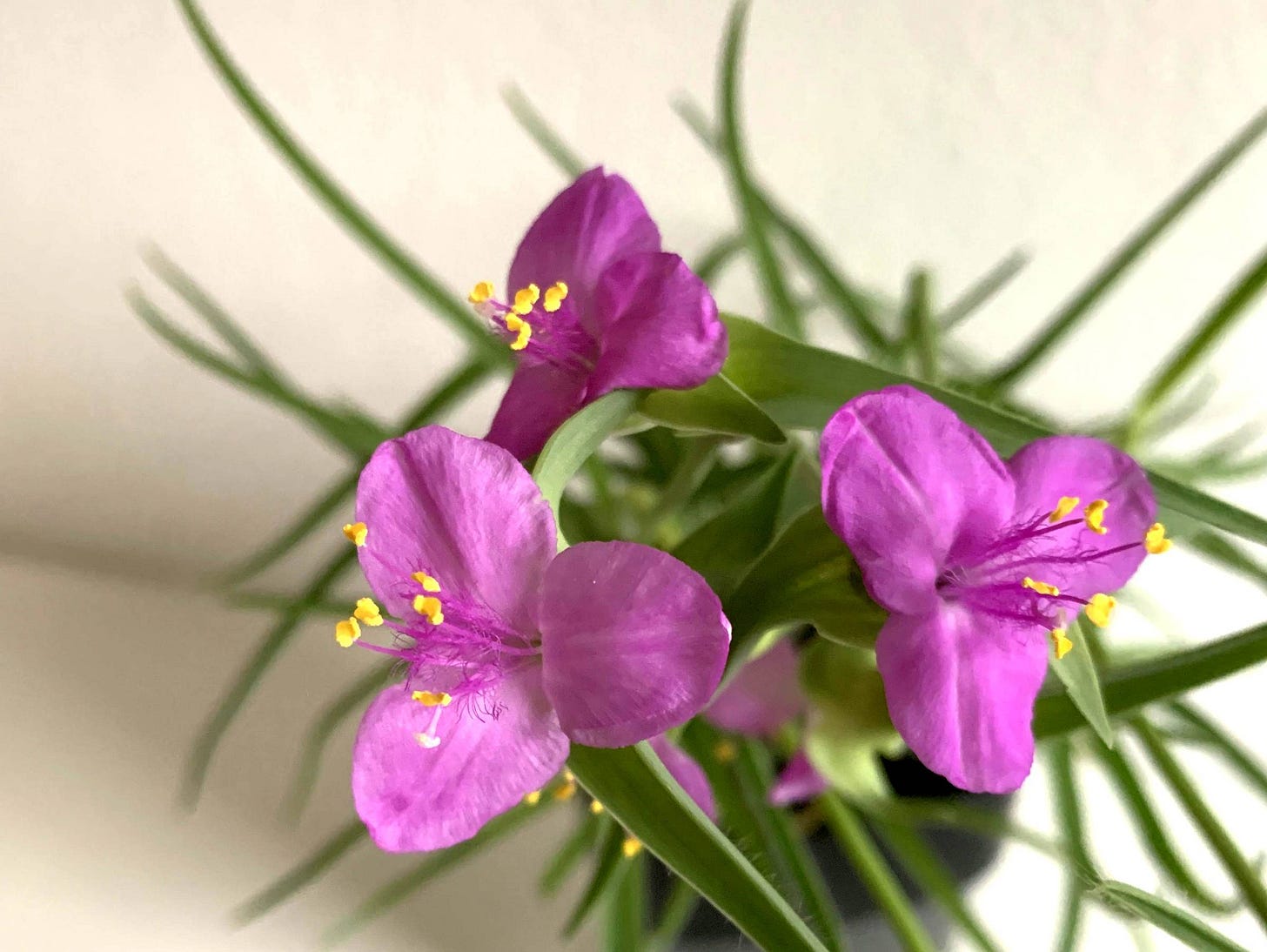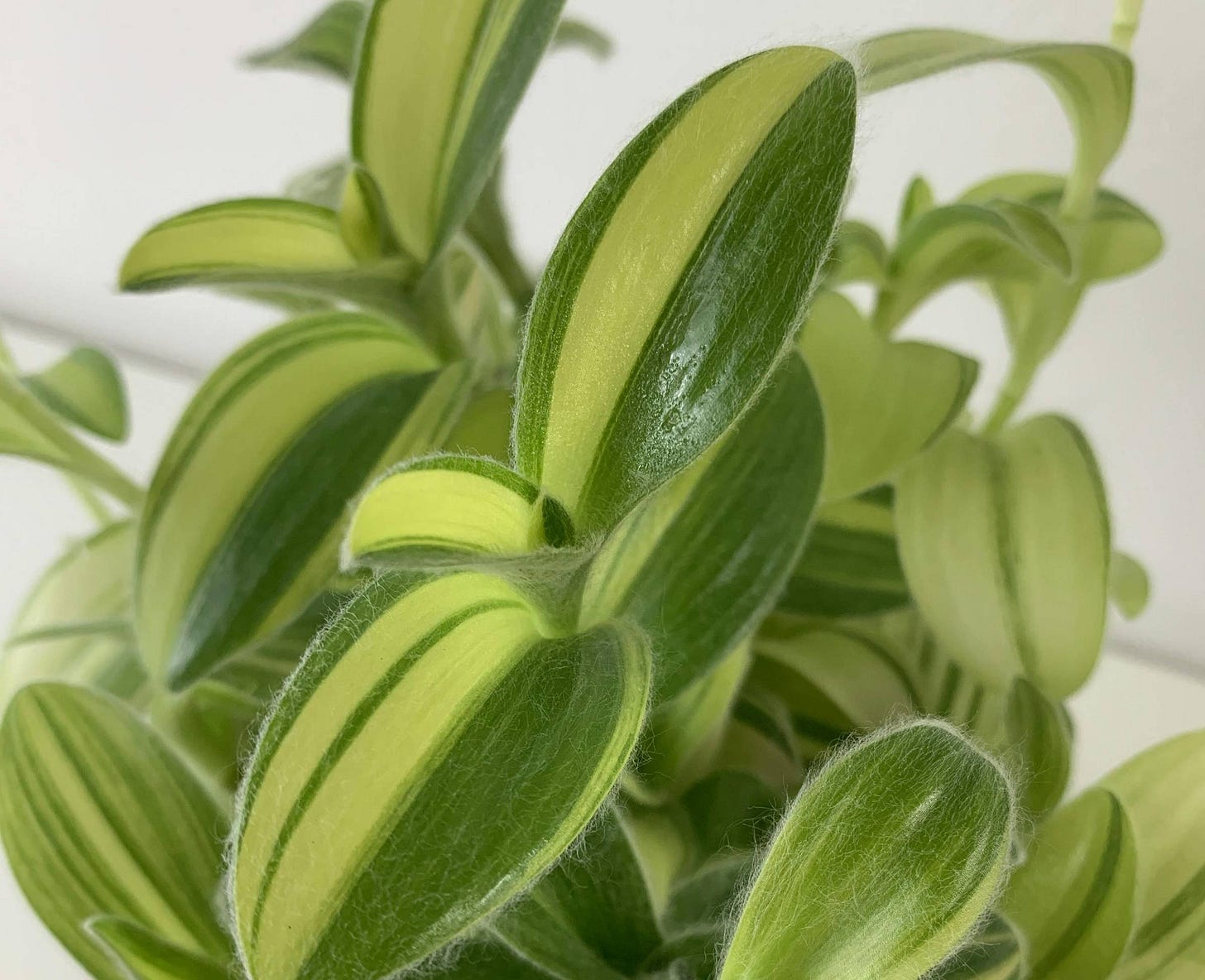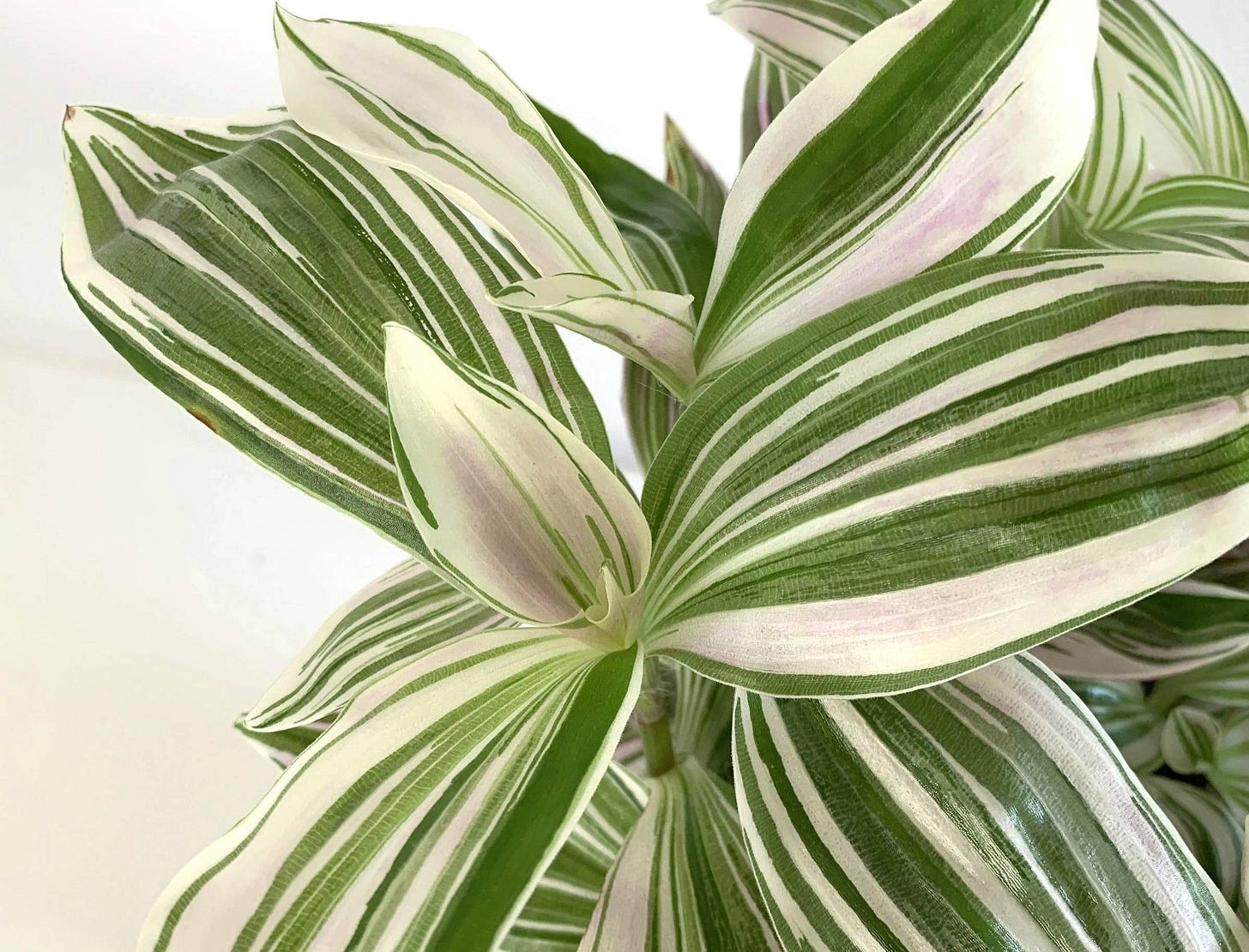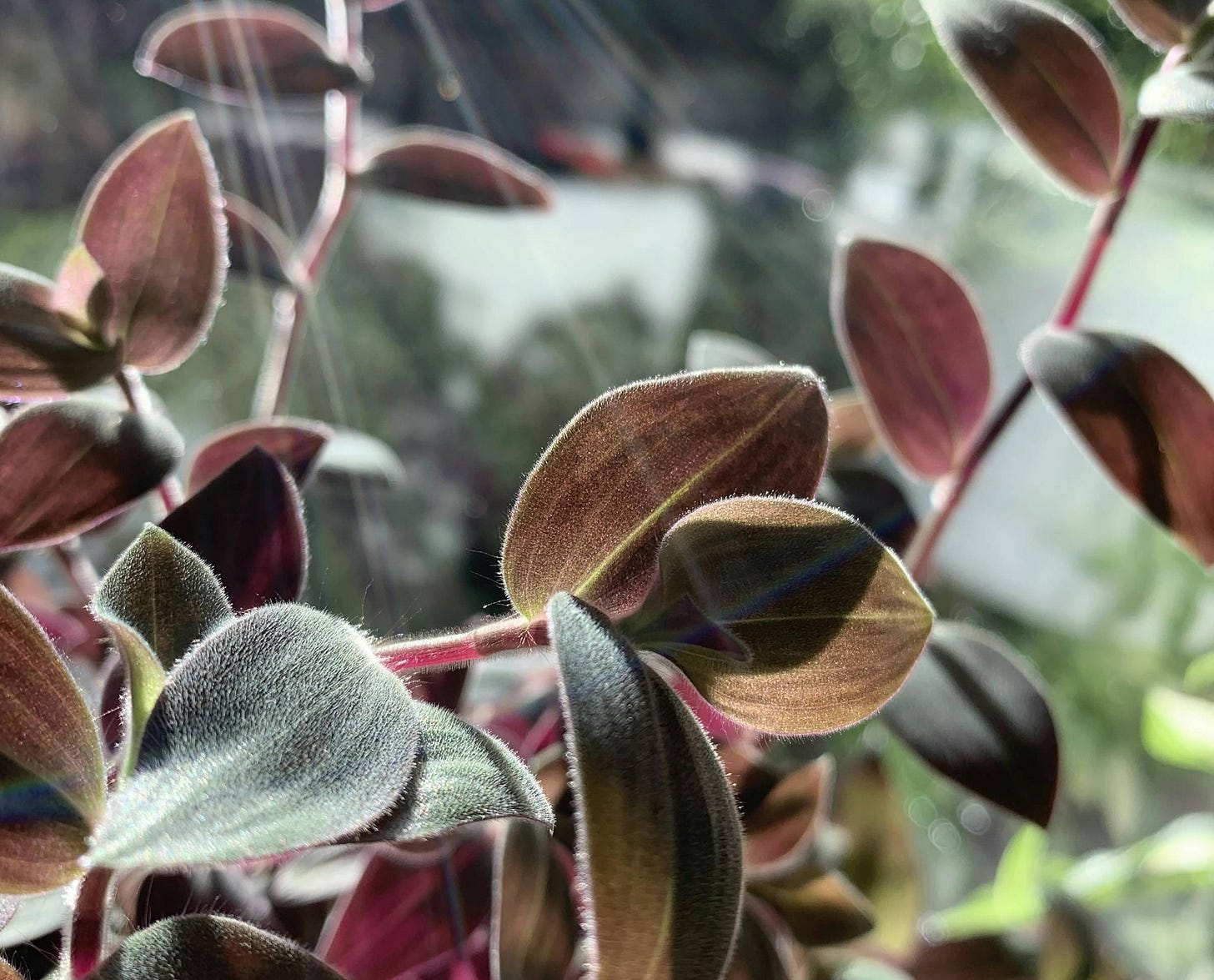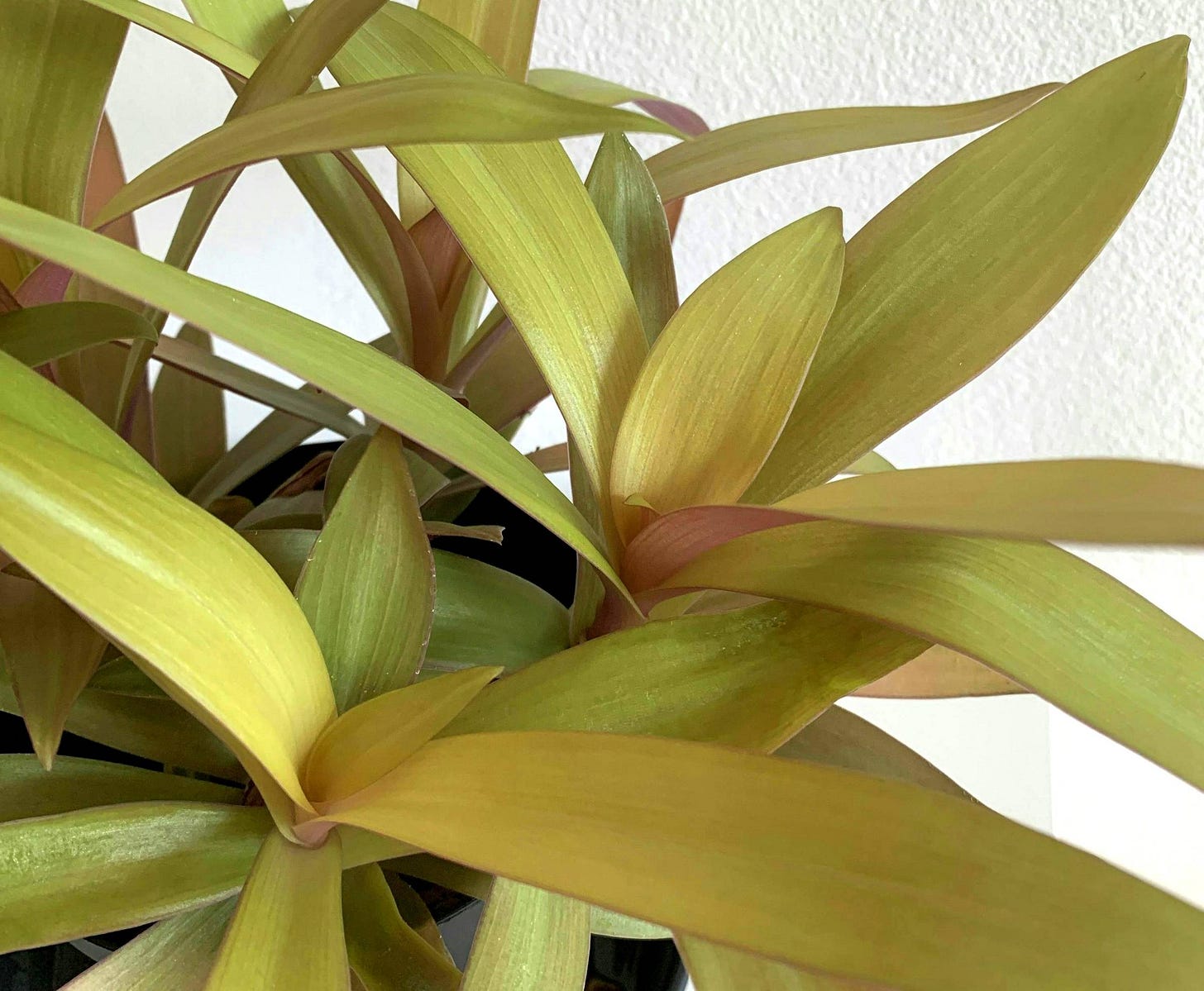Do All Types of Tradescantias Have the Same Care Needs?
Tradescantias are often seen as easygoing plants, and while the basic care is similar for most, not all varieties need the same care. Some do well in bright sunlight and can handle dry conditions, while others need a bit more careful care to stay happy and healthy. In this newsletter, I’ll walk you through how, in my experience, care can vary between different types of Tradescantias.
Pallida and Sillamontana
Let’s start with the Tradescantias that can handle a lot of sun and are quite drought-tolerant.
Pallida and Sillamontana are two of the toughest Tradescantias when it comes to sunlight and dry conditions. These plants love direct sunlight, and if you want your purple Pallidas to look their best, they need plenty of sun. They don’t do very well in low light conditions, as they will quickly become long and leggy.
They also prefer to dry out between waterings. Thanks to their thick stems and leaves, they can actually go several days without water and still stay healthy. But once you water, make sure to water thoroughly.
Variegated Tradescantias
On the other end of the spectrum are the more sensitive varieties, like Nanouk, Lisa (Tricolor), and those in the Continental Group. These variegated Tradescantias, with their beautiful white, pink, or cream stripes, need a bit more care. They are more sensitive to light—too much direct sunlight can burn their leaves, while too little can cause them to lose their variegation.
I’ve found that they’re more prone to root rot when given too much water. While they do need to dry out between waterings, they don’t like to go too many days without water either.
It’s also important to keep an eye on their variegation, as some types are more likely to revert to green. If they do start reverting, it’s a good idea to trim off the reverted parts to prevent them from taking over the plant.
Zebrina
When it comes to Zebrinas, there’s a difference between the variegated ones and the non-variegated ones. The non-variegated Zebrinas are very forgiving and tend to grow like weeds! They can handle a wide range of care routines and grow quickly, making them perfect for anyone looking for a fast-growing, resilient Tradescantia. Although they love plenty of light, including direct sunlight, they can also handle low light situations.
The variegated Zebrinas, however, can be a bit more fussy. They need just the right balance of light and water. They’re more prone to burning in direct sunlight and can be sensitive to overwatering. As with other variegated varieties, it’s important to keep an eye on the variegation and trim away any reverted parts to prevent them from taking over. Especially Quadricolor has a tendency to revert.
Green Varieties Like Baby Bunny Bellies, Fluminensis, and Mundula Green Hill
Then there are the true survivors. Varieties like Baby Bunny Bellies, the different Fluminensis (including variegated ones like Yellow Hill and Variegata, but excluding Lavender), and Mundula Green Hill seem to thrive no matter what you throw at them. These green varieties can handle a wide range of conditions, from low light to bright direct light, and can even tolerate less-than-ideal watering routines. If you’re looking for a Tradescantia that’s hard to kill, these are your best bet.
Spathacea
And finally, in my opinion, the Spathaceas are the Tradescantias that require the least care of all. They are very underrated plants that need minimal pruning, and with their thick, succulent-like leaves, they can store water and tolerate both dry spells and bright, direct sunlight. I’ve found that these plants don’t mind being left alone and will stay happy no matter what, as long as you don’t overwater them. They are truly some of the easiest plants in my collection.
As you can see, while the basics are generally the same, different types of Tradescantias have different care needs. I can’t cover every variety in this newsletter, but if you’re ever unsure about what your Tradescantia needs, feel free to reach out—I’m always happy to help!
If you haven’t already, don’t forget to subscribe so you never miss out on future newsletter.
Until next time, happy planting!
Katja


